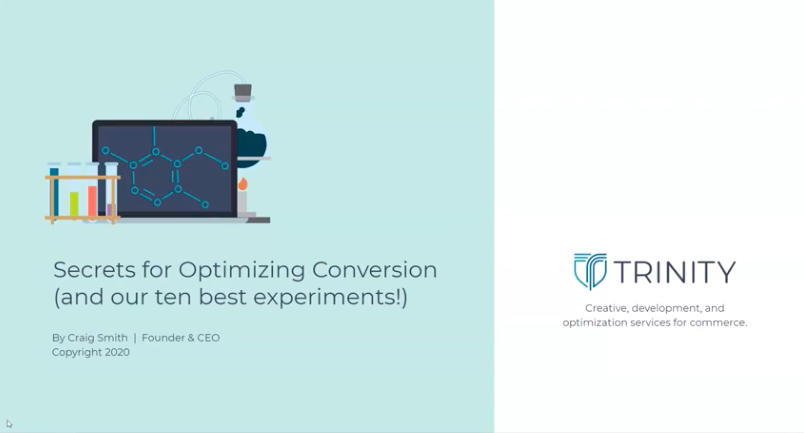Extended Visibility = Big eCommerce Opportunities
By Nate Ende, Chief Innovation Officer
Product & category reports now available in Google Analytics
Finally. Visibility into merchandising and product performance questions can be answered through strategic tag placement in Google Analytics. By indicating the type of interaction and product metadata, ecommerce brands can now track product impressions, clicks, add to carts, cart abandons, and sales at a product level.
These new capabilities open up many other knowledge dimensions as well such as category, product list aka site merchandising position (think Recommended Products’ or “Customer’s Who Bought Also Bought”), size, color, On Sale, etc. As an additional benefit of insight, within product lists we are able to see what products perform best in the higher positions.
But merchandising reports are not the only new benefit of this added layer of tagging, retailers can now can get a better view of the macro-level shopping experience through progression reporting (see below).
Shopping & Checkout Behavior
Gaining intelligence into the shopping flow of your store is paramount to reaching your potential. The additional product interaction tagging in Google Analytics allows us to indicate what interaction the customer is having with a product.
Starting with the impression in a list, and continuing on through a transaction, we can now extract this information and use it to create an aggregate shopping behavior funnel outside of the antiquated method of hacking’ content reports.
The following interactions (actions) are supported out of the box with the new enhanced ecommerce tagging layer from Google Analytics.
Gone are the days of creating custom segments to find sessions containing page views which then required extraction from analytics in order to visualize. Progression visualization based on true product interaction is now inherent in the GA platform along with the ability to easily segment groups of visitors who have not completed micro-progressions in order to analyze more deeply or re-market through Adwords.
We still have a ways to go to fully visualize and monitor the performance of our custom and non-linear shopping (and especially checkout) processes, but at a high level Google Analytics eCommerce capabilities has certainly turned a corner.
Enhanced Product Dimensions
While the new enhanced ecommerce tagging allows for brands to send product meta data through the script and into the GA platform, that’s not the only nor most comprehensive way to marry rich product data up with product interaction metrics.
Analytics has announced product dimension data that can now be uploaded through the interface allowing retailers to store non-dynamic product meta data in the platform and avoid sending redundant information such as color, size, brand, etc.
If the product ID that is transmitted along with the interaction call through the script can be matched up with a row of uploaded product information, we can now include those dimensions in our reporting and enrich our analysis data set even further empowering our marketing and merchandising teams.
While this is definitely a great feature, analytics professionals are certainly anxiously waiting for analytics to further close the loop between Google Merchant Center product data and analytics product data allowing a seamless integration between the two products and removing the need for a second upload of the same product information to GA.
AdWords / Remarketing
As mentioned earlier, analytics has strengthened it’s integration with AdWords allowing users to easily create remarketing lists in analytics from any previously created segment. Additionally within the new enhanced ecommerce reports, users will be able to quickly narrow into product groups or interaction groups (cart abandoners, category browsers, etc) and identify them as remarketing lists for use back in the AdWords interface.
So what do we have to do next?
Rethink Tagging
While all of this new enhanced ecommerce information are a long-awaited improvement to the analytics ecosystem, they don’t come without a cost. Retailers will need to work on their tagging structure to enable these new features.
They must first convert the scripts over to the new universal schema and then add the additional ecommerce library. Then they must deepen their page tags to include product interaction information on the appropriate screens and associated templates.
Essentially, anytime a product is seen by a visitor the retailer must send that products information and the context in which it was interacted with to analytics.
While this new layer may seem like a disruption to an already burdened IT staff, the visibility improvements will surely pay long-term dividends.
Leverage Google Tag Manager
If retailers have been keeping their sites current with GA tagging changes over the last few years, they probably already recognized this as roughly the 4th script schema change (synchronous, asynchronous, universal, enhanced ecommerce) they’ve implemented and rightfully should be skeptical as to whether or not this will be the final format.
Our recommendation is to assume it will not be and instead, take this opportunity to revisit the tagging & tracking strategy incorporating a Google Tag Manager implementation. Implementing a system such as Google Tag Manager will put retailers in a better position to ensure they build a solid data layer as well as mitigate the risk of having to retag the site for another analytics tagging structure change.




